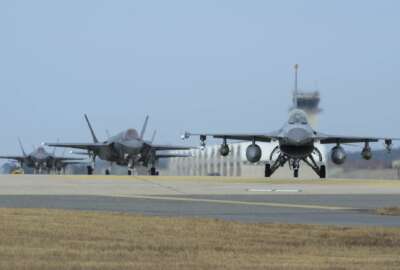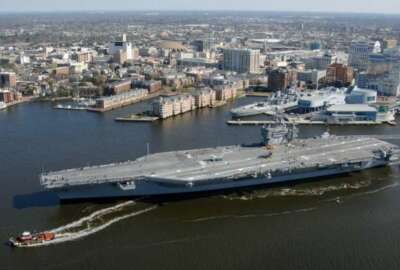DoD to bring in climate change chief in coming weeks
The Defense Department's policy shop will hold the new position.
After a month of unleashing new climate strategies and assessments, the Defense Department will create a new position focused solely on climate change.
Colin Kahl, DoD undersecretary for policy, said last Friday that because of the Pentagon’s new prioritization on how climate change will impact future war situations and threaten installations that his office will create a senior positions on the matter.
“You’ll see in the coming months, some organizational changes in my own office to make sure that we’re dealing with issues like climate change and energy and the Arctic, and that we’re taking these issues with the growing strategic seriousness of it,” Kahl said during a New America event. “My job is to make sure that the realities of the climate crisis are kind of a through-line through our various strategic and policy documents.”
Kahl said there will be a reorganization with a “senior person” who deals with a wide range of climate issues.
Climate has increasingly become a concern for the Pentagon through both Republican and Democratic administrations. DoD previously put out strategies for dealing with the Arctic as new resources become available due to ice melting.
Kahl said climate change effects are, in some cases, as detrimental as dealing with an adversary.
“In 2019, Omaha, Nebraska was hammered with extreme weather and Offutt Air Force Base, which happens to be the headquarters of U.S. Strategic Command, found itself seven feet underwater. Just six months prior to that in late 2018. We had bases in North Carolina and Florida hammered by hurricanes, people having to leave bases and aircraft having to flee to higher to higher ground, it generated billions of dollars of damage to U.S. installations,” he said.
“And if you saw the wreckage on these bases, frankly, no terrorist organization has done that amount of damage in the past few years to American installations in the United States. But climate change has. So if we do not take this this issue seriously as a department, we are not tackling the current security environment,” he added.
DoD released a 32-page strategy at the beginning of October that is aimed at building a military that operates within a world where extreme weather, melting ice caps and shifting resources is the norm.
“Climate change will continue to amplify operational demands on the force, degrade installations and infrastructure, increase health risks to our service members, and could require modifications to existing and planned equipment,” Defense Secretary Lloyd Austin wrote in the plan. “Extreme weather events are already costing the Department billions of dollars and are degrading mission capabilities.”
The strategy adds climate change to every strategic decision DoD makes, mandates training for conditions caused by extreme weather and makes an effort to mitigate some of the military’s pollution.
DoD released another strategy later in the month analyzing the risks caused by climate change. That document integrates climate change into military doctrine in terms of taking into account security implications and planning to reduce vulnerabilities.
“As the global and cross-cutting consequences of climate change increase the demands on the department, the strategy provides a starting point for a shared understanding of the mission risks of climate change — and lays out a path forward,” Austin wrote at the beginning of the plan.
Copyright © 2025 Federal News Network. All rights reserved. This website is not intended for users located within the European Economic Area.
Scott Maucione is a defense reporter for Federal News Network and reports on human capital, workforce and the Defense Department at-large.
Follow @smaucioneWFED







